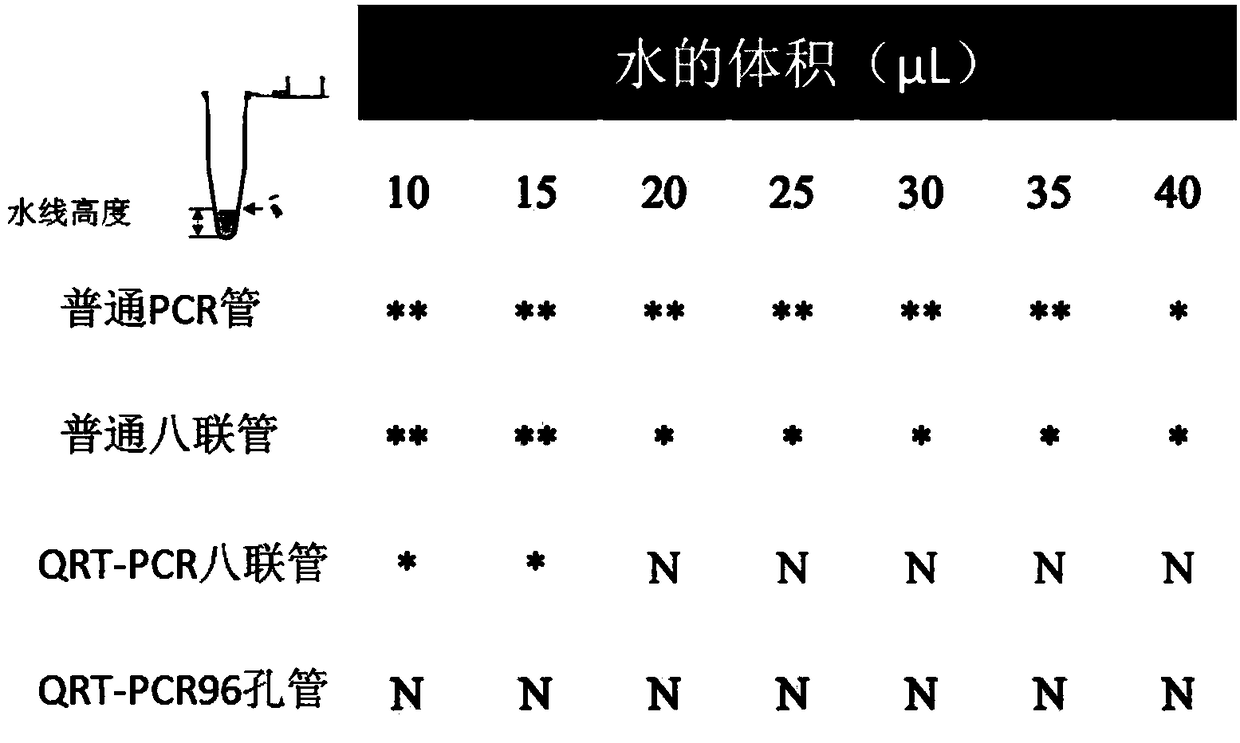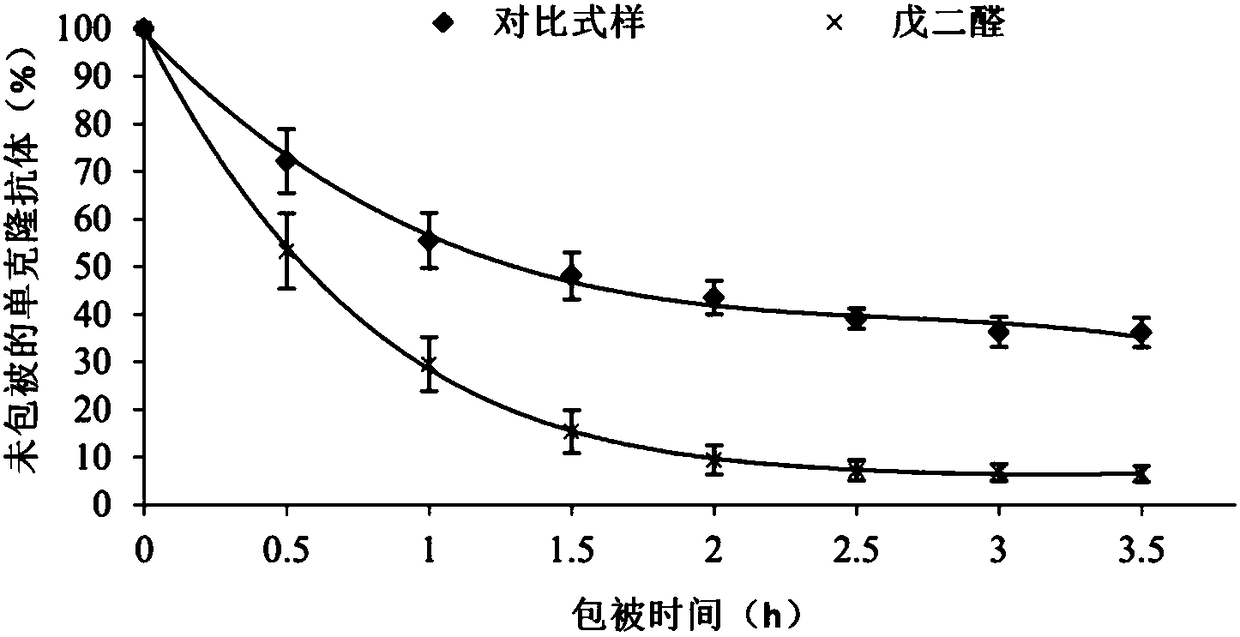Measuring method of immune PCR of abscisic acid
An assay method and abscisic acid technology, applied in the field of immuno-PCR assay of abscisic acid, can solve the problems of complicated operation, low cost, expensive equipment, etc., and achieve the effects of simple and convenient operation, improved binding ability, and improved repeatability
- Summary
- Abstract
- Description
- Claims
- Application Information
AI Technical Summary
Problems solved by technology
Method used
Image
Examples
Embodiment 1
[0042] In order to facilitate the high-throughput quantitative analysis of immuno-PCR, this example compares the uniformity of different types of commonly used polypropylene (PP) PCR tubes.
[0043] The specific method is to add a certain amount of water to different types of polypropylene (PP) PCR tubes, and observe the height of the water line to verify the uniformity of the PCR tubes. The results are as follows: figure 2 shown.
[0044] In immuno-PCR, the consistency and stability of the solidified probe mixture (ie DNA template) on the surface of the PCR tube is the decisive factor for the accurate quantification of the analyte before the PCR program runs. Therefore, before coating with ABA monoclonal antibody, it is necessary to select high-quality PCR tubes / plates, high-performance cross-linking agents, and suitable washing buffers. From figure 2 It can be seen that ordinary PCR tubes and eight-tube tubes have high deviations on the inner surface, which are not suita...
Embodiment 2
[0046] This example compares the effect of glutaraldehyde pretreatment on the binding ability between PCR tubes / plates and ABA antibodies.
[0047] The specific test steps include:
[0048] (1) Pretreat the PCR tube / plate with glutaraldehyde: drop 100 μL of 0.8% glutaraldehyde into the PCR tube / plate, soak at room temperature for 2 hours, then remove the glutaraldehyde and rinse the PCR with PBS Tube / plate 3 times;
[0049] (2) ABA monoclonal antibody coating: Then add 10 μL of ABA monoclonal antibody with a concentration of 20 μg to the bottom of the PCR tube / plate and incubate at 4°C for 2 hours, then remove the monoclonal antibody solution and wash it 3 times with buffer washing solution, The buffer washing solutions used were TBS (Tris buffer, pH 7.5), PBS (phosphate-buffered saline, pH 7.4), PBST (phosphate-buffered saline and Tween, pH 7.5) and ultrapure water. Add 100 μL of 1% bovine serum albumin to each tube / well, incubate at 4°C for 1 hour, wash the PCR tube / plate ...
Embodiment 3
[0058] Based on the immuno-PCR method of the present invention, the ABA content in eight different tissues of Arabidopsis thaliana and rice was measured using real-time immuno-PCR method (RT-Im-PCR), and each tissue was repeated 12 times in a 96-well plate test, the process is as figure 1 shown.
[0059] The specific test steps are:
[0060] (1) Plant material and sampling:
[0061] Disinfect the surfaces of Arabidopsis and rice seeds with 70% alcohol and 5% sodium hypochlorite, wash them three times, and incubate in the dark for 48 hours, then start to germinate simultaneously at 4°C. Arabidopsis and rice seeds were cultured in 0.4% (w / v) phytocondensed solidified MS medium. Arabidopsis and rice seedlings were placed vertically in a growth chamber at 22°C and 32°C, respectively, with 16 hours of light followed by 8 hours of darkness. To collect stems and flowers, ten-day-old Arabidopsis seedlings were moved into pots for maturity. About 100mg of fresh plant tissue was co...
PUM
 Login to View More
Login to View More Abstract
Description
Claims
Application Information
 Login to View More
Login to View More - R&D
- Intellectual Property
- Life Sciences
- Materials
- Tech Scout
- Unparalleled Data Quality
- Higher Quality Content
- 60% Fewer Hallucinations
Browse by: Latest US Patents, China's latest patents, Technical Efficacy Thesaurus, Application Domain, Technology Topic, Popular Technical Reports.
© 2025 PatSnap. All rights reserved.Legal|Privacy policy|Modern Slavery Act Transparency Statement|Sitemap|About US| Contact US: help@patsnap.com



